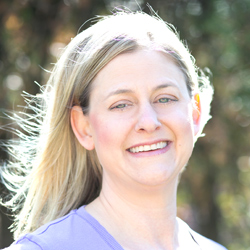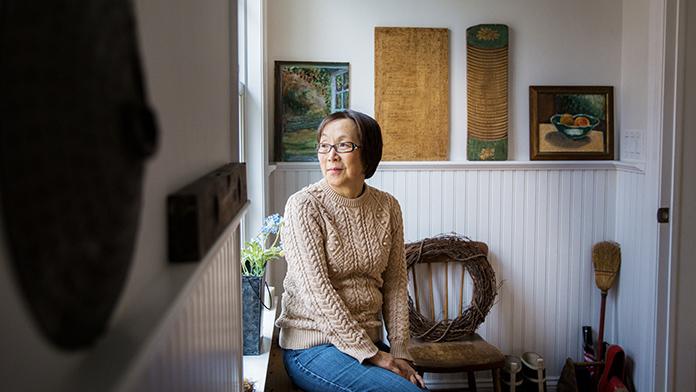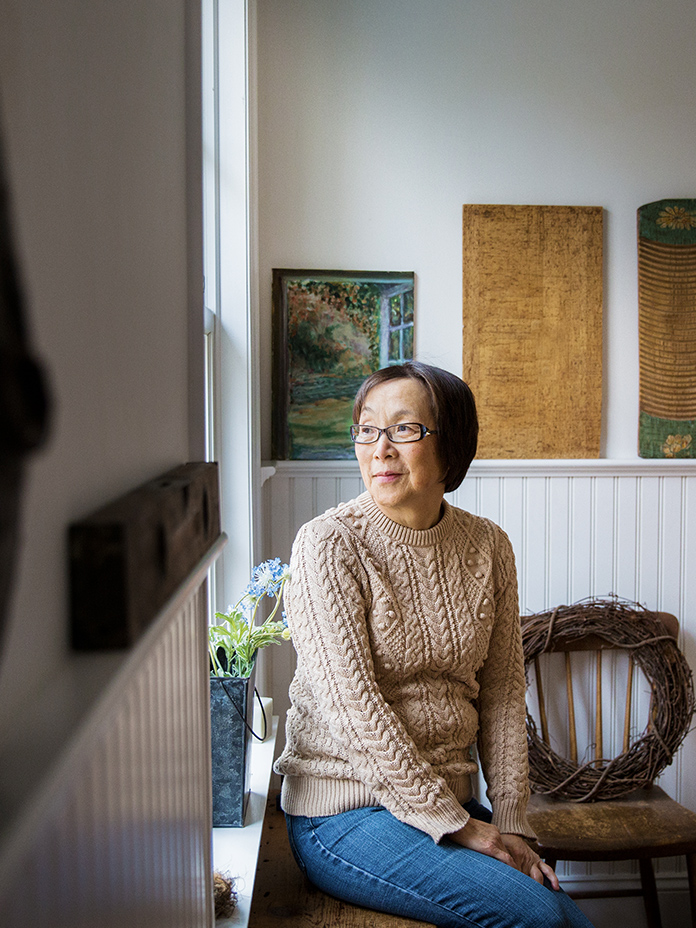The information you will be accessing is provided by another organization or vendor. If you do not intend to leave our site, close this message.
D-SNP home page > Health tips & tools > Have a happier winter season
Have a happier winter season
Did your mood drop right along with the temperature this winter? If so, you don’t have to grin and bear it until spring. Find out if major depressive disorder with seasonal pattern is to blame for your blues — and learn how to feel better.
 By Hallie Levine
By Hallie Levine


It’s normal and healthy to feel sad sometimes, especially when there’s something specific bringing you down. Like missing a loved one or dealing with a tough health complication. But if you notice that the blues sink in as summer turns to fall and winter, you may have a recognized condition. It’s known as major depressive disorder (MDD) with seasonal pattern. (This was formerly known as seasonal affective disorder, or SAD.)
This form of depression is triggered by the seasons, and up to 3 percent of people go through it.1 Experts don’t know what causes it. But they have a few theories. It might have to do with changes to the sunlight. Less sunlight in colder months may disrupt your biological clock. It can also cause you to produce less serotonin, a brain chemical that affects mood.
And seasonal changes can throw off your melatonin levels. Melatonin is a hormone that plays a role in mood and sleep. All these changes can lead to feelings of depression, including MDD with seasonal pattern.
We do know that you’re at a higher risk of MDD with seasonal pattern if you already have another mental health disorder. Some examples are depression or bipolar disorder.1 But these conditions can happen any time of year. MDD with seasonal pattern symptoms usually worsen in the fall and winter months. They then get better in the spring and summer. About 10 percent of the time, though, the opposite occurs. In this case, people with MDD with seasonal pattern feel worse when the weather is warm. And they feel better in the colder winter months.
The good news is that you don’t have to wait until the seasons change to feel better. If you’re diagnosed with MDD with seasonal pattern, there are treatments out there that can help, says Rebecca Leslie, Psy.D. She’s a psychologist based in Atlanta. Here’s how to spot the condition, plus how to get help if you need it.
Feeling down? Here’s what’s typical, and what’s not
Remember, MDD with seasonal pattern is a type of depression. So in many ways, the symptoms are much like typical depression. They just either start or get worse with the changing of seasons.
Here are some things that can help you tell if what you’re feeling is a case of the typical short-term blues, or if it’s something bigger. But keep in mind that having just one of the symptoms below doesn’t necessarily mean that you have MDD with seasonal pattern, says Leslie. If you’re concerned about your mental health, you should reach out to a doctor or therapist, she adds.
Short-term blues: Feeling down for a few days here and there this time of year. Many of us feel a bit blue as the weather turns colder and it gets dark earlier, says Leslie. This can also worsen around the holidays, especially if you aren’t able to see friends and loved ones.
Something bigger: Feeling depressed for weeks every time this season rolls around.
Short-term blues: Feeling blue for a day or two after getting some bad news. You may feel deeply sad right after the loss of a pet, for example, or after losing your job. That’s to be expected, says Jneé Hill, L.C.S.W., a licensed psychotherapist in New York City. But the sadness should lift after a few days. And it should be off and on, meaning that if you do something you enjoy, like seeing a friend, you feel better.
Something bigger: Feeling depressed for most of the day, nearly every day, for two weeks or longer. Do these feelings stay with you most of the day and last for more than two weeks? If so, you’re likely facing something more than just the blues, says Hill.
Short-term blues: Not feeling up to an event or activity that’s usually a favorite.
Something bigger: Having no interest in any of the activities you used to enjoy. You may also notice that it’s tougher to focus. Simple things that usually give you pleasure, like reading a book or watching TV, may seem hard. And you may feel overwhelmed doing your day-to-day activities, notes Leslie.
Short-term blues: An occasional night of tossing and turning in bed. We all have trouble sleeping now and then. It’s especially common during the holiday season, when schedules may change and throw us off our regular routine, says Hill.
Something bigger: Having trouble sleeping most nights. About 75 percent of people with depression have problems falling or staying asleep.2 The reverse can happen too, where you find yourself sleeping a lot and not wanting to get out of bed, adds Hill.
3 ways to ease major depressive disorder with seasonal pattern
All of the things that normally work to lift mood can be helpful for easing symptoms of MDD with seasonal pattern. On the list: getting regular exercise, keeping in touch with friends and getting enough nourishment, says Leslie. But there are a few treatments that are specifically recommended for MDD with seasonal pattern.
1. Light therapy
With light therapy, you sit a few feet away from a special light box within the first hour of waking up. Being exposed to bright light early in the day appears to cause changes in the brain hormones linked to mood, says Leslie.
It often starts working in a few days to a few weeks, according to the Mayo Clinic. And light therapy has been found to improve symptoms of depression. According to recent research in the journal Psychotherapy and Psychosomatics, the improvement can be almost 40%.3
But light boxes can be expensive. And they often aren’t covered by insurance. One thing you can do instead that’s totally free is to seek out more sunlight during your day. Open your blinds and sit near a sunny window, especially first thing in the morning.
Better yet, spend time outside. You could go for a long walk, or just sit on your stoop with a cup of hot coffee and a good book. Even if it’s a gray day, exposure to sunlight can help ease depression symptoms.
2. Psychotherapy
Psychotherapy, or talk therapy, also helps treat symptoms of MDD with seasonal pattern. One type of psychotherapy that’s particularly helpful is cognitive behavioral therapy (CBT). It can help you:
- Identify and change negative thoughts and behaviors that may make you feel worse, like staying at home alone
- Learn healthy ways to cope, like eating right and exercising
- Learn how to keep stress in check
About 50 percent of people who do CBT for MDD with seasonal pattern experience relief from their symptoms.4
3. Medications
Your doctor may suggest that you try an antidepressant if your symptoms are very severe. Or they may suggest an antidepressant if your symptoms don’t get better with talk therapy. These medications work very well to treat MDD with seasonal pattern. Studies show that about 60 percent of people experience improvement while taking them.4 Some that are often used for MDD with seasonal pattern include:
- Sertraline (Zoloft or generic)
- Fluoxetine (Prozac or generic)
- Venlafaxine (Effexor or generic)
Sometimes your doctor will suggest that you start an antidepressant before your symptoms begin each year. This is because they can take several weeks to kick in. Whether you try medication or another treatment, working with your doctor and taking an active approach to overcoming MDD with seasonal pattern can make a difference. Doing so can help you feel better and get back to enjoying the season — whatever season it may be.
1U.S. Department of Health and Human Services, U.S. National Library of Medicine, Medline Plus. Seasonal affective disorder. August 2020. Accessed June 13, 2022.
2Johns Hopkins Medicine. Depression and sleep: understanding the connection. Accessed June 13, 2022.
3Pjrek E, Friedrich ME, Cambioli L, et al. The efficacy of light therapy in the treatment of seasonal affective disorder: a meta-analysis of randomized controlled trials. Psychotherapy and Psychosomatics. January 2020; 89(1): 17-24.
4Up to Date. Seasonal affective disorder: treatment. September 2021. Accessed June 13, 2022.



